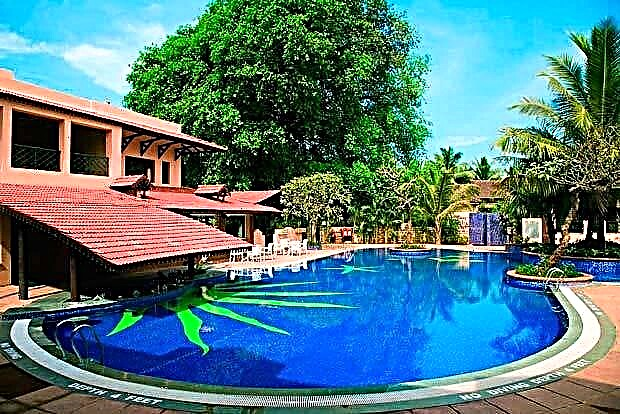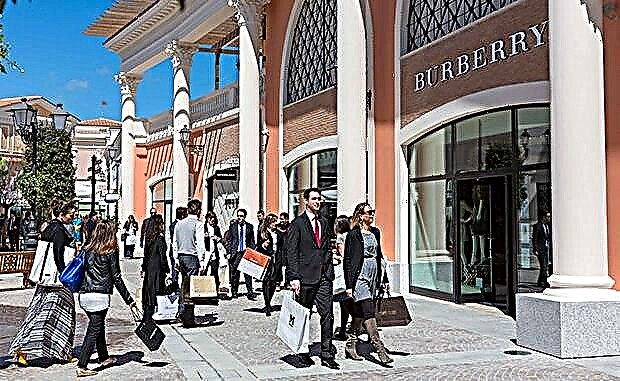Address: Moscow, New square, 3/4
Foundation date: 1872 year
Coordinates: 55 ° 45'28.7 "N 37 ° 37'44.1" E
Content:
The Polytech occupies a special place among the most famous museums in Moscow. The main Russian scientific and technical museum is located in the very center of the capital, within walking distance from the Kremlin. Now the main building is being restored, but in 2019 its halls will receive the first visitors. Despite the ongoing work, museum exhibits are presented at three exhibition sites in the city, so anyone can see them.

View of the building of the Polytechnic Museum
How the museum was created
In the second half of the 19th century, the idea was born to display a collection of items collected for the 200th anniversary of the Russian Tsar Peter I. In 1871, the city authorities allocated five hundred thousand rubles for the creation of a new museum.
A large construction site was laid at 4 Lubyansky Proezd, near the building of the Committee of the Imperial Philanthropic Society. The following year, the opening of the museum exposition took place in the temporary halls on Prechistenka, and a large-scale Polytechnic exhibition was presented to the public.
The construction of the main building lasted 30 years. Famous Russian architects participated in its design - Ippolit Antonovich Monighetti, Nikolai Alexandrovich Shokhini, Georgy Ivanovich Makayev.
Museum history
At the very beginning, the museum was of practical importance. Its exhibits consisted of nine thematic departments, each of which was closely related to different fields of scientific knowledge.

In 1907, when the Large Auditorium was opened, eminent domestic and foreign scientists began to conduct experiments and lecture in the building. Over the years, the museum audience listened to the speeches of the physicist Niels Bohr, the biologist Ilya Ilyich Mechnikov and the physiologist Kliment Arkadyevich Timiryazev. True, visitors came not only to scientific lectures. Alexander Blok, Vladimir Mayakovsky, and later Evgeny Yevtushenko and Bulat Okudzhava performed in front of the crowded halls with their poems.
When the country participated in the First World War, the museum gave many of the premises for hospitals for the wounded at the front. In addition, there was an X-ray room, which was actively used by all city hospitals. After the revolution, V. I. Lenin and Felix Dzerzhinsky made speeches in the building.
In July 1919, by decision of the authorities, the museum became the Central Institute of Polytechnic Knowledge. Its employees began to conduct educational programs in various branches of science. They lectured to the general public and introduced them to advances in physics, mathematics, natural science, economics and technology.

During the period of industrialization, the concept of the museum changed. It was used as a training center for workers. In the 1930s, a large-scale exhibition was held in the museum, at which the results of the first Soviet five-year plan were presented to visitors. The guests of the museum were able to see the achievements in the field of energy, agriculture, metallurgy, fuel and chemical industries.
After the end of World War II, the museum became subordinate to the Knowledge Society. It became an educational center and was engaged in the scientific training of the broad masses of the population.
Collections
Today, the museum funds have collected over 220 thousand exhibits, which are combined in one and a half hundred thematic collections. The famous Polytechnic Library, which began work in 1862, has more than 3.5 million volumes of scientific books, among which there are unique editions of the 16th-18th centuries. These are books dedicated to unique inventions, the destinies of discoverers, biographies of scientists and methods for solving certain scientific problems.

The Polytechnic Museum displays a collection of automotive technology, for example, a car with a cut engine, which shows the entire working process. There are interesting examples of bicycles from the 19th and 20th centuries. Separate sections of the exposition are devoted to telephones, amateur and professional radios, surveillance equipment and computers. The first computers "Ural" and "Setun" are exhibited here.
Rare car
There are many rare exhibits in the museum collections, but the Russo-Balt car, which was released in 1911, is considered a real treasure. This is the only specimen that has survived to this day from the beginning of the last century. Moreover, he independently drove to the exhibition space after restoration.
The machine of the inexpensive series of the K 12/20 model has a four-cylinder engine with a volume of 2211 cc. cm, the calculated engine power is 12 horsepower and the actual power is 20 horsepower. It is known that a total of 141 model K cars were produced in five series.

The aircraft number 73 was acquired by the aeronautical school of the city of Tver, and until 1929 it was operated there. Later it was bought by Orlov, who worked as a boiler mechanic and lived in the city of Kimry. He drove this car until the tires worn out on it. This happened in 1939. Since then, the machine has not been used. During the winter months of 1942-1943, the car crashed. His cylinder block was defrosted, and the spoiled equipment stood for many years in an unheated barn.
Later, in 1966, the owner of a rare car offered to buy a car from the Gorky Film Studio. The museum staff found out about this, paid the money to the film studio, and in the following 1967 the car underwent a complete reconstruction. When the car arrived at the museum, it had many newly manufactured parts and a completely redesigned engine.
What is on display today
The restoration is in full swing and will be completed in 2019-2020. But this does not mean that the museum is completely closed. In order for visitors to see the unique collections, they were moved to other exhibition venues in the city.

Museum exhibits are presented in one of the pavilions on the territory of VDNKh, in the halls of Technopolis "Moscow" and in the premises of the ZIL Cultural Center near Avtozavodskaya. For several years now, a modern Museum and Educational Center has been under construction in the capital, in which Polytech and Lomonosov Moscow State University will take part.
Polytech at VDNKh
Since the spring of 2014, while the main building is being renovated, the interactive exhibition complex “Russia makes itself” has been opened at VDNKh. It acquaints visitors with outstanding Russian scientists and modern Russian developments. In addition, those who have been here can take part in scientific experiments.
The exposition is divided into seven thematic sections. Tourists are shown a model of the first Soviet atomic bomb, Chebyshev's unique plantigrade car, Tsiolkovsky's rocket plane, an interactive model of the biosphere and beautiful patterns on a ferromagnetic liquid. The guides talk about the principle of operation of the holographic table and ionophone, the device of the exoskeleton and artificial lightning.

USSR Transport Pavilion (Agriculture)
In the halls there are many monitors with headphones, wearing which anyone can listen to a lecture in Russian or English. A vending machine selling space food is installed at the exit.
The exhibition is open any day except Monday: on weekdays from 11:00 to 19:00, and on weekends from 11:00 to 21:00. Admission for adults costs 350 rubles on weekdays and 400 rubles on weekends. For discounted tickets you need to pay 150-200 rubles (2018). Schoolchildren are admitted free of charge. It should be borne in mind that the cash desks stop working one hour before closing.
"Open collection"
In 2014, the museum opened its funds to the public. Visitors get acquainted with the exhibits and observe the work of the museum. You can visit such an exhibition only by appointment, as part of a group. Tours run from Tuesday to Thursday three times a day: at 10:00, 12:00 and 15:00.

A sightseeing tour for a group of 6-12 people costs 2,400 rubles, and an interactive program - 3,000 rubles (2018).Once a week, museum staff conduct free excursions for children from low-income families, orphans and disabled children.
The collection is located in Technopolis, within walking distance from the Tekstilshchiki metro station in Moscow. For better preservation of exhibits in the halls, the temperature is maintained at + 18 ° C, so visitors are asked to come in warm clothes.
How to get there
The main building is located at 3/4 Novaya Square, between the Kitay-Gorod and Lubyanka metro stations.











